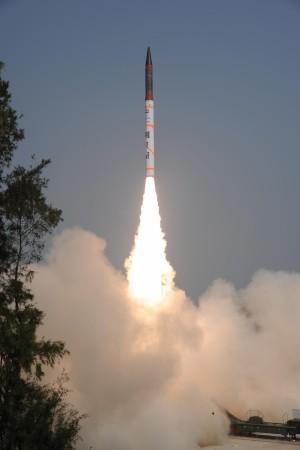
India succeeded in the first test-firing of its long-range, nuclear-capable, surface-to-surface Agni-IV missile from Wheeler Island off the Odisha coast on Tuesday.
"The launch was successful," Defence Research and Development Organisation (DRDO) spokesman Ravi Kumar Gupta told IANS.
The 17-tonne, 20-metre-tall Agni-IV missile was test-fired from the defence base near Dhamra in Bhadrak district, around 200km from Bhubaneswar.
The missile has the capacity to hit targets up to 4,000 km away. It has been equipped with state-of-the-art avionics and fifth-generation on-board computer and has been uploaded with the features to correct and guide itself for in-flight disturbances.
Agni has three variants of missiles including medium-range ballistic missile (Agni-I), intermediate-range ballistic missile (Agni-II, Agni-III, Agni-IV) and inter-continental ballistic missile (Agni-V, Agni VI), of which the first one is fully operational.
In the case of intermediate-range ballistic missile, Agni-II and Agni-III are operational, while Agni-IV has been tested on Tuesday, 2 December 2014.
As for inter-continental ballistic missiles, Agni-V is under testing at present, while Agni-VI is still in the early stages of development.
Agni-V, which is in the last phase of testing, is capable of striking targets 8,000km away and can be launched from anywhere. Meanwhile, Agni-VI, having a strike-range of 10,000km, can be deployed on submarines as well as land-based launchers.








